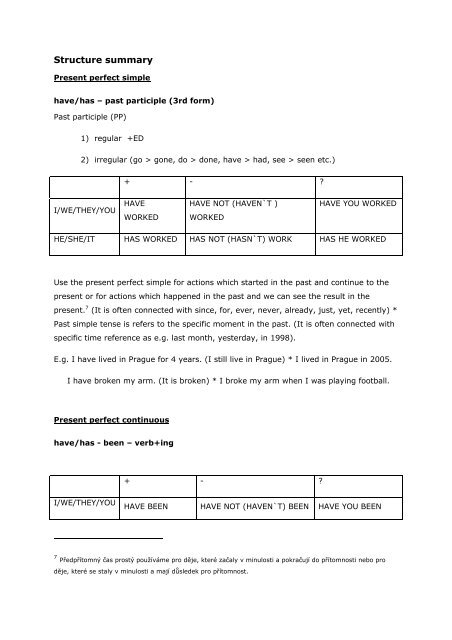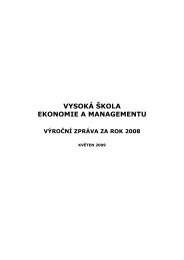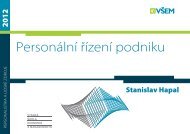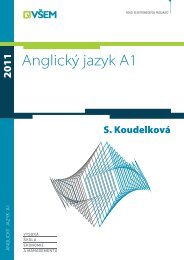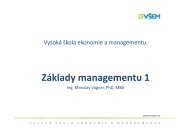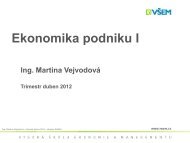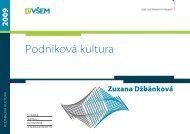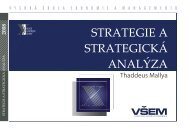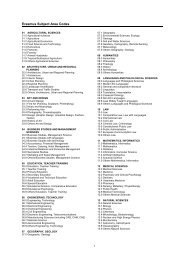Anglický jazyk A0 - VŠEM
Anglický jazyk A0 - VŠEM
Anglický jazyk A0 - VŠEM
Create successful ePaper yourself
Turn your PDF publications into a flip-book with our unique Google optimized e-Paper software.
Structure summaryPresent perfect simplehave/has – past participle (3rd form)Past participle (PP)1) regular +ED2) irregular (go > gone, do > done, have > had, see > seen etc.)+ - ?I/WE/THEY/YOUHAVEWORKEDHAVE NOT (HAVEN`T )WORKEDHAVE YOU WORKEDHE/SHE/IT HAS WORKED HAS NOT (HASN`T) WORK HAS HE WORKEDUse the present perfect simple for actions which started in the past and continue to thepresent or for actions which happened in the past and we can see the result in thepresent. 7 (It is often connected with since, for, ever, never, already, just, yet, recently) *Past simple tense is refers to the specific moment in the past. (It is often connected withspecific time reference as e.g. last month, yesterday, in 1998).E.g. I have lived in Prague for 4 years. (I still live in Prague) * I lived in Prague in 2005.I have broken my arm. (It is broken) * I broke my arm when I was playing football.Present perfect continuoushave/has - been – verb+ing+ - ?I/WE/THEY/YOUHAVE BEEN HAVE NOT (HAVEN`T) BEEN HAVE YOU BEEN7 Předpřítomný čas prostý používáme pro děje, které začaly v minulosti a pokračují do přítomnosti nebo proděje, které se staly v minulosti a mají důsledek pro přítomnost.


